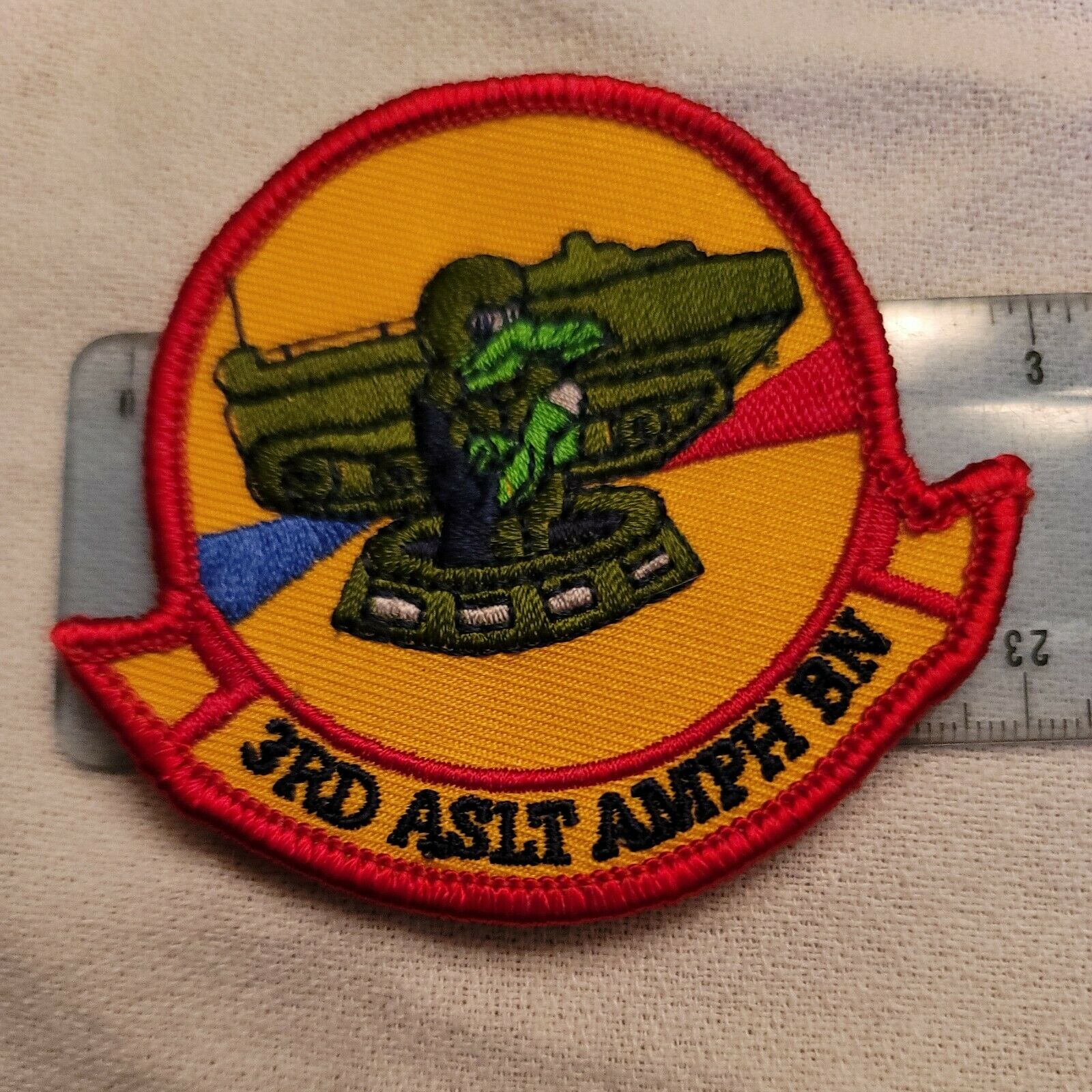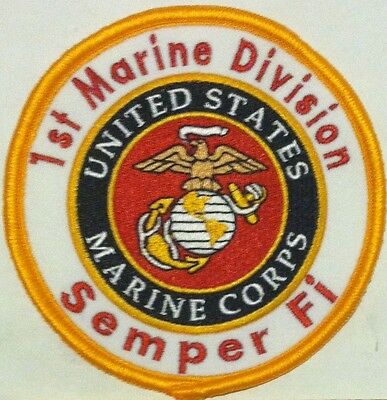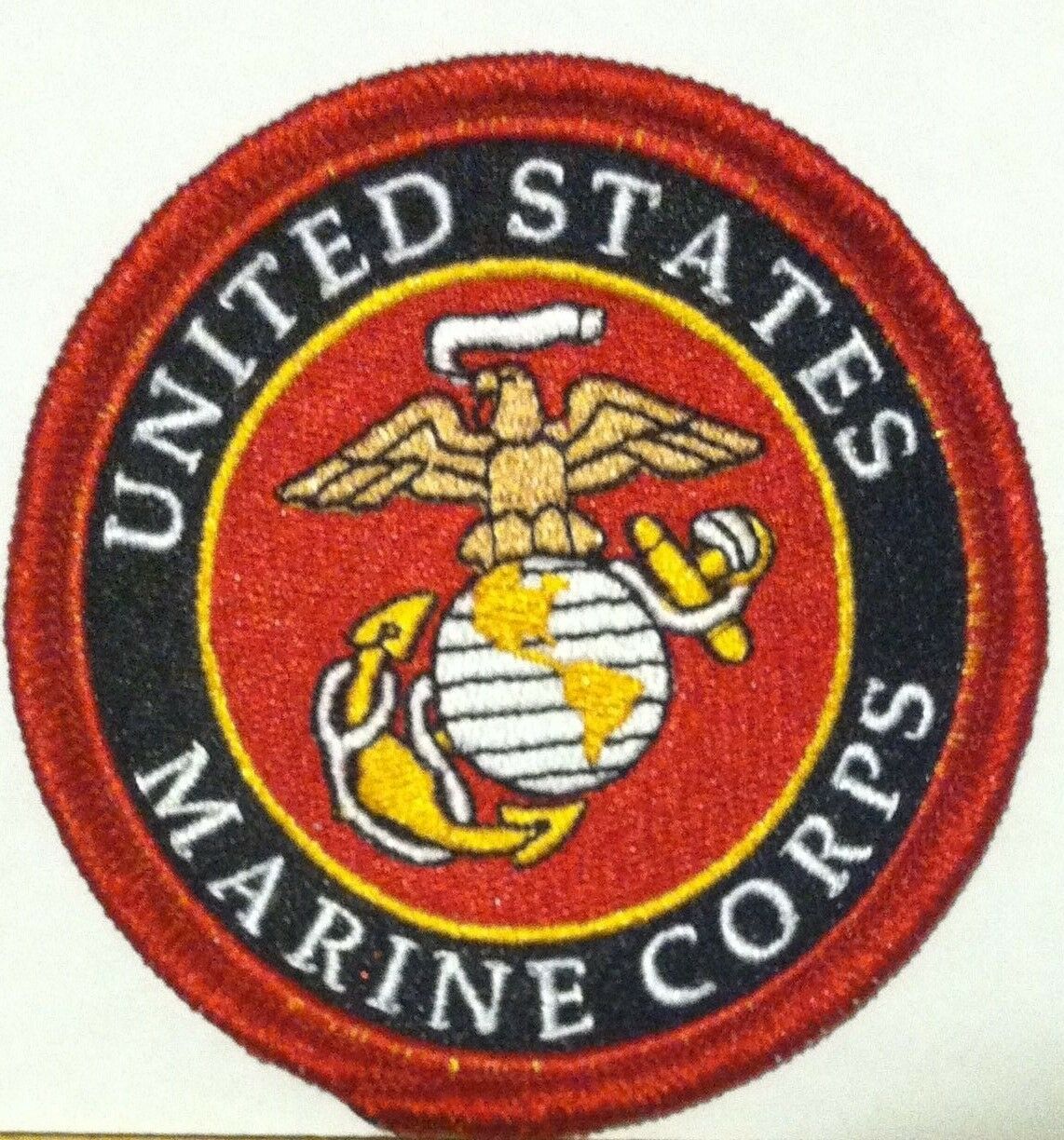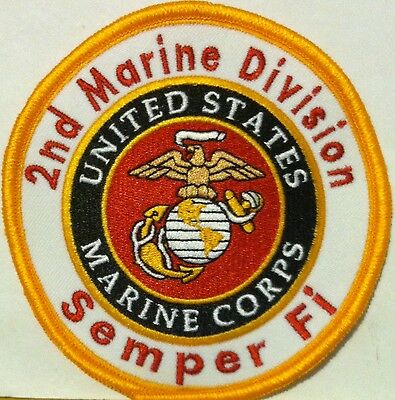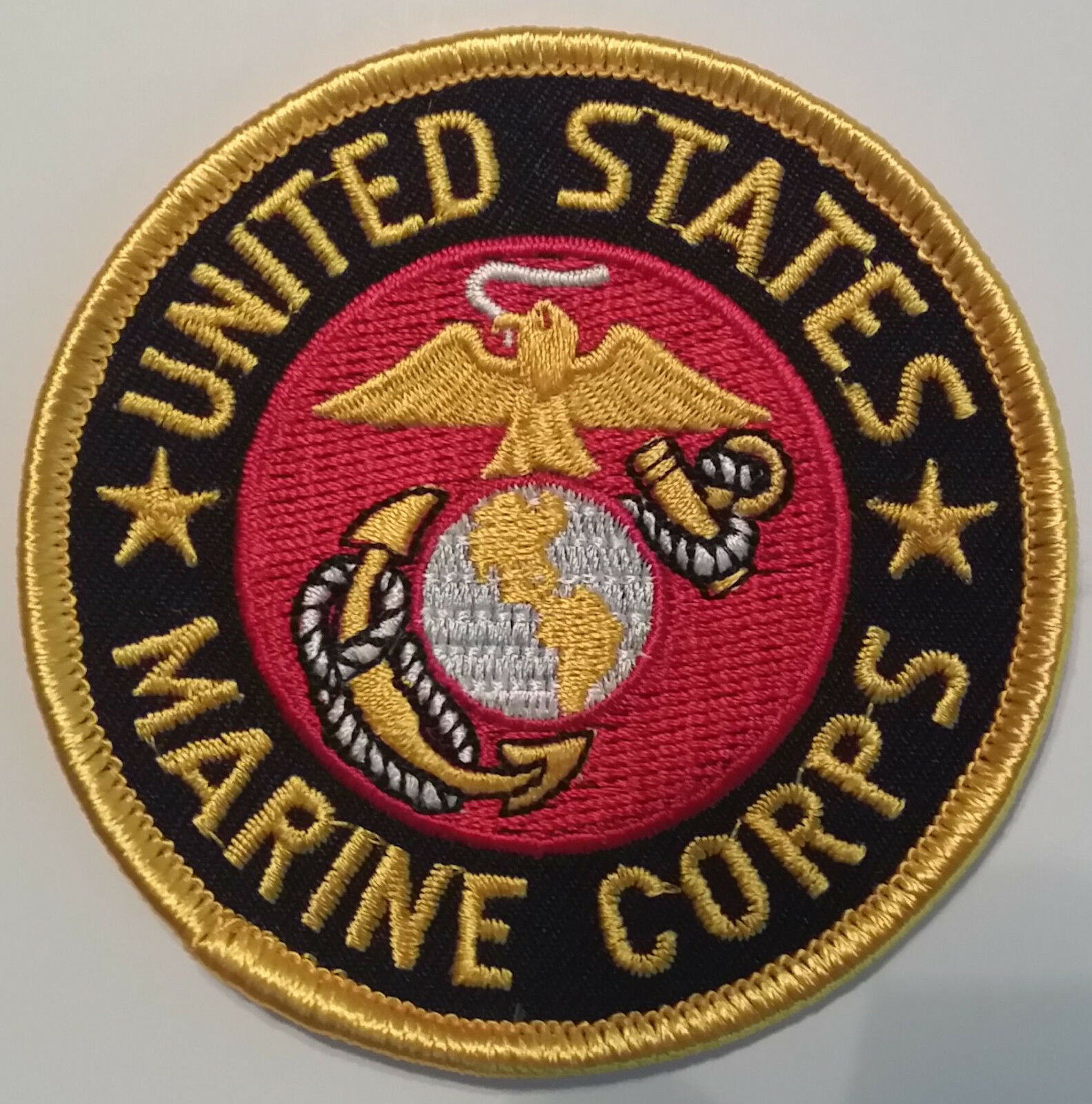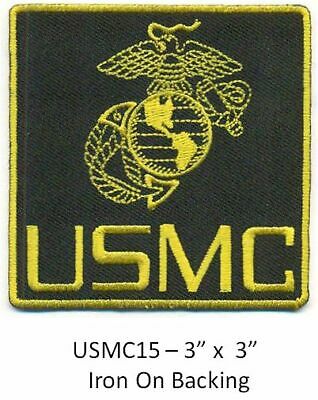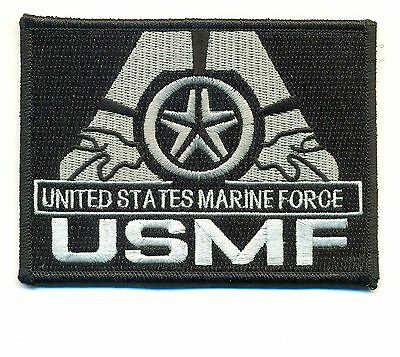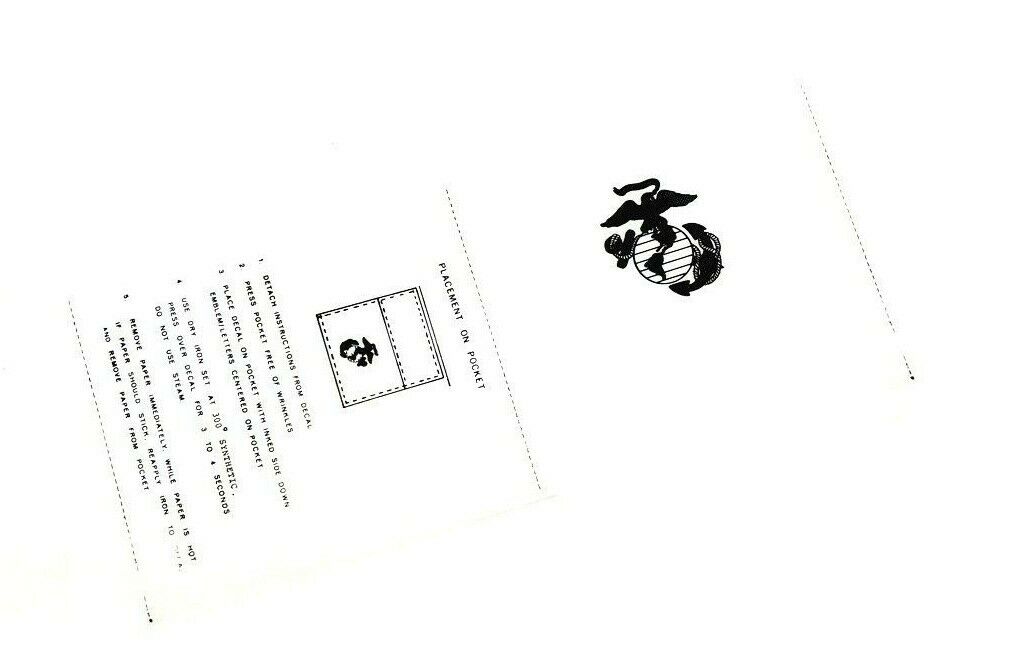-40%
USMC PATCH 3rd Assault Amphibian Battalion NEW SEE STORE USMC PATCHS MEDALS
$ 3.69
- Description
- Size Guide
Description
PLEASE FOLLOW OUR E BAY STORESEE ALL PICS
SALE
SEE OUR STORE
PLEASE READ WHOLE ADD
SEE STORE !!!!
3rd Assault Amphibian Battalion
From Wikipedia, the free encyclopedia
Jump to navigation
Jump to search
3rd Assault Amphibian Battalion
3rd AABn Insignia
Active
September 16, 1942 – present
Country
United States of America
Branch
United States Marine Corps
Type
Assault Amphibian Battalion
Role
Amphibious assault
Size
Over 1,000 Marines
Part of
1st Marine Division
I Marine Expeditionary Force
Garrison/HQ
Marine Corps Base Camp Pendleton
Marine Corps Air Ground Combat Center Twentynine Palms
, California
Nickname(s)
3rd Tracks
Patron
Archangel Michael
Mascot(s)
Gator
Engagements
World War II
Battle of Bougainville
Battle of Guam
Battle of Iwo Jima
Vietnam War
Operation Desert Storm
Operation Iraqi Freedom
2003 invasion of Iraq
Commanders
Current
commander
LtCol W. M. Moore
3rd Assault Amphibian Battalion
(3rd AABn) is one of two active duty assault amphibian battalions in the
United States Marine Corps
. The battalion's primary weapon system is the
Amphibious Assault Vehicle
or AAV. The AAV is a 27.5-ton armored vehicle that carries up to 21 combat-loaded Marines and is armed with the UGWS (UpGunned Weapons Station), which mounts a .50 cal (12.7 mm)
M2HB machine gun
and a
Mk-19 40 mm grenade launcher
. The battalion is also equipped with the
Amphibious Combat Vehicle
or
ACV
, a rather new variant to the USMC’s amphibious armament which will replace the AAV in years to come. The AAV
ACV
are the only armored vehicles in the U.S. inventory that are fully capable of operations both on land and in the ocean. The battalion is part of the
1st Marine Division
and the
I Marine Expeditionary Force
. The unit is based in
Camp Pendleton
,
California
.
Contents
1
Mission
2
Subordinate units
3
History
3.1
World War II
3.2
1952 - 1966
3.3
Vietnam War and 1970s
3.4
1980s
3.5
Desert Shield/Storm
3.6
Restore Hope
3.7
Global War on Terror
4
Medals
5
Notable former members
6
Unit Honors
7
See also
8
Notes
9
References
Mission
[
edit
]
Land the surface assault element of the landing force and their equipment in a single lift from assault shipping during amphibious operations to inland objectives; to conduct mechanized operations and related combat support in subsequent operations ashore. The specific Mission Essential Tasks List (METL) includes:
Preparing combat ready units for deployment and operations in support of the
1st Marine Division
Preparing combat ready units for deployment and operations in support of Maritime Pre-Positioned Forces (MPF) to any AOR as directed.
Providing sustained amphibious and ground mechanized support to the assault elements of the 1st Marine Division as well as other combat support as directed during subsequent operations ashore.
Providing support to the
1st Combat Engineer Battalion
and other 1st Marine Division units in the clearing of lanes through minefields and other obstacles during amphibious operations and in support of subsequent operations ashore.
Preparing combat ready units for deployment with designated
Marine Expeditionary Units
(MEU) and deployment to Okinawa as part of the Unit Deployment Program (UDP) in support of 3rd Marine Division
Subordinate units
[
edit
]
The 3rd Assault Amphibian Battalion is currently composed of a Headquarters and Service Company, 3 companies located at
Camp Pendleton
, and three retired companies, one of which being the reinforced company located at the
Marine Corps Air Ground Combat Center Twentynine Palms
.
Name
Location
Alpha Company
Camp Pendleton
Bravo Company
Camp Pendleton
Charlie Company
Camp Pendleton
Delta Company (REIN)
(retired 2021)
Marine Corps Air Ground Combat Center Twentynine Palms
Echo Company
(retired 2015)
Camp Pendleton
Fox Company
(retired 2012)
Camp Pendleton
Headquarters & Services Company
Camp Pendleton
History
[
edit
]
World War II
[
edit
]
"Swamp Angel" -
LVT-1
from 3rd Amtrac Bn in Bougainville
3rd Assault Amphibian Battalion was originally activated 16 September 1942 at San Diego, California, as 3rd Amphibian Tractor (Amtrac) Battalion and assigned to the
3rd Marine Division
. During December 1942 the battalion relocated from San Diego a short distance up the coast to
Camp Pendleton
. After training for a few months the battalion then deployed in February–March 1943 to
Auckland
,
New Zealand
in preparation for combat in the Pacific theater.
During World War II, the battalion was primarily armed with
Landing Vehicle Tracked
(LVT), specifically the
LVT
-2 also known as "WATER BUFFALOS".
First flag on Guam on boat hook mast. Two U.S. officers plant the American flag on Guam July 20, 1944.
The battalion fought in the following combat actions:
Bougainville
with 124 LVT-1s
Guam
with 193 LVT-2s and LVT-4s
Iwo Jima
with 90 LVT-2s
Smashed by Japanese mortar and shellfire, trapped by Iwo's treacherous black-ash sands, amtracs and other vehicles of war lay knocked out.
For its actions in World War II, 3rd Amphibian Tractor Battalion was awarded the
Presidential Unit Citation
Streamer,
Asiatic-Pacific Campaign Medal
Streamer With Four Bronze Stars, and the
World War II Victory Medal
Streamer.
At the conclusion of World War II the battalion redeployed in March 1945 to
Maui
, territory of
Hawaii
and then relocated during February 1946 back to Camp Pendleton, California. It was deactivated several months later on 1 May 1946.
1952 - 1966
[
edit
]
3rd Amphibian Tractor Battalion was reactivated 1 April 1952 at Camp Pendleton, California, and assigned to
Fleet Marine Force
, Pacific. It was subsequently reassigned during October 1955 to the
1st Marine Division
. Elements participated in the
Cuban Missile Crisis
, October–December 1962
During this period the battalion was still armed with LVTs - transitioning primarily to the
LVT-5
in the late 1950s.
Vietnam War and 1970s
[
edit
]
3rd Amphibian Tractor Battalion deployed during February 1965 to
Camp Schwab
,
Okinawa
and redeployed again in June 1965 to the
Republic of Vietnam
. There the battalion fought in the
Vietnam War
from June 1966 - January 1970. During this conflict the battalion distinguished itself at:
Chu Lai
Da Nang
An Hoa
Hoi An
Throughout Vietnam the battalion was armed with variants of the
LVT-5
.
For its actions in Vietnam, 3rd Amtrac Battalion was awarded the
Presidential Unit Citation
Streamer,
Navy Meritorious Unit Commendation
Streamer,
National Defense Service Medal
Streamer,
Vietnam Service Medal
Streamer With Two Silver Stars,
Vietnam Gallantry Cross
with Palm Streamer, and the
Vietnam Civil Actions Medal
Unit Citation Streamer.
The battalion relocated during February 1970 to Camp Pendleton, California, and was reassigned to the 5th
Marine Expeditionary Brigade
. It was again reassigned in August 1970 to the 5th Marine Amphibious Brigade. Subsequently, in April 1971 the battalion was reassigned to the 1st Marine Division with whom it remains to this day.
In the early 1970s the battalion transitioned from the
LVT-5
to its replacement the
LVT-7
.
On 30 December 1976 the battalion was re-designated from 3rd Amphibian Tractor Battalion to 3rd Assault Amphibian Battalion (written as 3rd AABn). The battalion participated in numerous training exercises throughout the remainder of the 1970s.
1980s
[
edit
]
Throughout the 1980s, 3rd Assault Amphibian Battalion deployed companies on its regular schedule of six month deployments to the forward units in
Hawaii
and
Okinawa
, including units aboard amphibious troop ships for fast-reaction forces in the
Pacific
and
Indian Oceans
and into the
Persian Gulf
. It shared personnel and vehicles with the 1st Armored Assault Battalion as part of the Unit Deployment Program.
In the early 1980s the battalion's LVT-7s underwent a Service Life Extension Program (SLEP), which converted the LVT-7 vehicles to the improved
Amphibious Assault Vehicle
-7A1 (AAV-7A1) by adding an improved engine, transmission, and weapons system and improving the overall maintainability of the vehicle. Upon realizing the need to mechanize units participating in the Combined Arms Exercises (CAX), two platoons of AAVs were transferred to the
Marine Corps Air Ground Combat Center Twentynine Palms
(MCAGCC) in July 1979. Of the two platoons formed from Camp Pendleton, one went to Company A, 3d Tank Battalion, and the other platoon went to Company B, 3d Tank Battalion.
The two platoons later merged and became Company D,
3rd Tank Battalion
in September 1980. Two additional platoons from 3d Assault Amphibian Battalion in Hawaii arrived on board the MCAGCC in December 1981. A redesignation ceremony was held on 18 January 1982 in which the colors of Company D, 3rd Tank Battalion were formally retired and replaced with the new colors of Company D (Rein), 3d Assault Amphibian Battalion. The company was instrumental in training Marines in desert warfare as they rotated in and out of the live-fire desert training area, a key to the Marine Corp's success in the 1991
Gulf War
.
For its superior performance from 1983 to 1985, the battalion was awarded a
Navy Meritorious Unit Commendation
.
Desert Shield/Storm
[
edit
]
In August 1990, 3rd AABn received orders to prepare for an overseas deployment to
Southwest Asia
as a response to the
Iraqi invasion of Kuwait
. In the following month the unit deployed to
Saudi Arabia
and received shipments of its
Amphibious Assault Vehicles
from
Maritime Prepositioning ships
to augment its current vehicle ranks.
During this time the battalion began upgrading its AAVP-7A1s to carry the UGWS (UpGunned Weapons Station), which mounts a .50 cal (12.7 mm)
M2HB machine gun
and a
Mk-19 40 mm grenade launcher
.
In preparation for the assault into Kuwait, the battalion divided into two main mechanized infantry task forces, along with
1st
and
3rd Tank Battalions
, to form Task Force Ripper and Task Force Papa Bear respectively. The units trained and patrolled the Saudi frontier with Kuwait until the start of the ground war in February 1991.
After five days of combat the two task forces, along with other Marine task forces, British and Pan-Arab units, captured
Kuwait International Airport
and a cease-fire was announced. During the march to
Kuwait City
, the mechanized infantry task forces were responsible for the defeat of numerous Iraqi regiments, the capture of tens of thousands of Iraqi prisoners, and the capture or destruction of thousands of enemy armored vehicles. 3rd AABn returned to
Camp Pendleton
in March 1991.
For its actions during the Gulf War, the battalion was awarded a { Presidential Unit Citation } Streamer.
Navy Unit Commendation
Streamer,
National Defense Service Medal
Streamer, and the
Southwest Asia Service Medal
Streamer With Two Bronze Stars.
AAVP7-A1 from 3rd AABn maneuvers near Mogadishu Intl Airport, December 1992.
Restore Hope
[
edit
]
On 9 December 1992, elements of 3rd AABn attached to the
15th MEU
landed on the beach just outside the
Mogadishu
International Airport in
Somalia
in support of
Operation Restore Hope
. These initial forces were soon followed by Bravo, Delta, and H&S Companies of 3rd AABn. These units' operations stretched from Mogadishu to Bardera, Baidoa, and Kismayo. The battalion served as a blocking force for the International Airport's reception of airlifted humanitarian supplies, then extended its services as road guards for supply convoys and foot patrols in and around
Mogadishu
.
Elements of 3rd AABn served in Somalia or off the coast aboard
MEUs
from 1992 until approximately 1995. For its actions during Operation Restore Hope, the battalion was awarded the
Joint Meritorious Unit Award
Streamer and the
Armed Forces Expeditionary Medal
Streamer.
Global War on Terror
[
edit
]
3rd AABn Marines conduct a motorized patrol of Dulab, Iraq, July 17, 2006.
In 2003, 3rd AABn participated in
Operation Iraqi Freedom
as part of the
1st Marine Division
. They first deployed in February 2003 to Kuwait and crossed the border into Iraq in March, attacking all the way to
Baghdad
. The battalion served as the primary mechanized assault support for the infantry and proved to be an invaluable asset in crossing the vast distances and urban areas of Iraq. Companies from 3rd AABn continue to deploy to Iraq on a regular basis in support of
Multi-National Forces West
(MNF-W). In the Al Anbar province they conduct all manner of operations ranging from traditional infantry mechanized assault support to acting independently as motorized forces patrolling vast urban and desert areas.
In 2010, the battalion was deployed to Helmand Province, Afghanistan. During that deployment the battalion suffered a casualty; Corporal Julio Vargas, who was killed by an IED on July 20.
[1]
Medals
[
edit
]
To date, the battalion's actions in support of the Global War on Terror have earned it a
Presidential Unit Citation
Streamer,
Navy Meritorious Unit Commendation
Streamer,
National Defense Service Medal
Streamer,
Global War on Terrorism Expeditionary Medal
Streamer, and the
Global War on Terrorism Service Medal
Streamer.
Notable former members
[
edit
]
Justin LeHew
- One of the most highly decorated US Servicemen serving in the war on terror. Recipient of the
Navy Cross
for action during the
Battle of Nasiriyah
in 2003. Recipient of the
Bronze Star Medal
with combat "V" for actions during the battle of Najaf 2004.
Unit Honors
[
edit
]
3rd Assault Amphibian Battalion's unit awards include:
Presidential Unit Citation
Streamer With Three Bronze Stars
Joint Meritorious Unit Award
Steamer
Navy Unit Commendation
Streamer
Navy Meritorious Unit Commendation
Streamer With Two Bronze Stars
Asiatic-Pacific Campaign Medal
Streamer With Four Bronze Stars
World War II Victory Medal
Streamer
National Defense Service Medal
Streamer With Two Bronze Stars
Armed Forces Expeditionary Medal
Streamer
Vietnam Service Medal
Streamer With Two Silver Stars
Southwest Asia Service Medal
Streamer With Two Bronze Stars
Global War on Terrorism Expeditionary Medal
Streamer
Global War on Terrorism Service Medal
Streamer
Vietnam Gallantry Cross
Unit Citation with Palm Streamer
Vietnam Civil Actions Medal
Unit Citation Streamer
